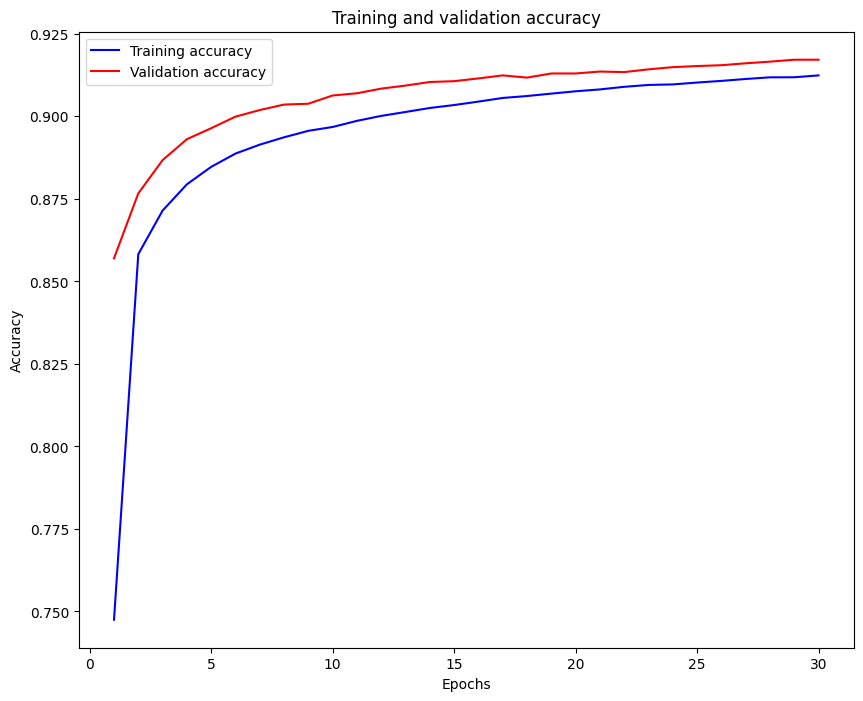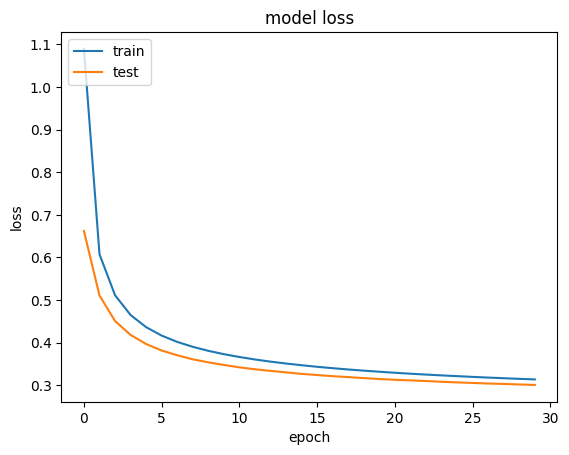📘 선형 모델 요약
🧠 1. 선형 모델 개요
- 입력 데이터를 벡터 형태로 처리하는 가장 단순한 형태의 머신러닝 모델
- 선형 변환 + 간단한 결정 함수로 분류 수행
🧱 2. 벡터화 (Vectorization)
- 선형 모델은 1차원 벡터 형태의 입력만 처리 가능
- 따라서, 2D/3D 이미지를 1D 벡터로 변환해야 함
예: 4x4 픽셀 이미지를 (1,16) 벡터로 변환
🧮 3. 선형 분류기 - Score 함수
- 입력 벡터와 가중치 행렬의 곱으로 각 클래스의 점수(score) 계산
- Score 계산은 행렬 곱을 통해 병렬 처리 가능
📊 4. Softmax 분류기
- 각 클래스의 score를 확률 값으로 변환
- softmax 출력은 각 클래스에 대한 확률 분포를 나타냄
📉 5. 손실 함수 - Cross Entropy Loss
- 예측 확률과 정답 클래스 간의 거리 계산
- 정답 클래스에 해당하는 softmax 값에
-log를 취해 손실 계산
⚙️ 6. 최적화 - SGD (Stochastic Gradient Descent)
- 전체 데이터를 한 번에 학습하지 않고, 미니 배치 단위로 경사 하강법 적용
- 계산 효율성과 빠른 수렴을 위해 사용됨
🧪 7. 실습 개요 (MNIST)
- MNIST 숫자 이미지 데이터를 선형 모델에 적용하여 학습
- 정확도 및 손실 곡선을 시각화하여 학습 결과 분석
✅ 요약
- 선형 모델은 가장 기본적인 분류기이며, 기초 개념(벡터화, softmax, cross entropy, SGD 등)을 학습하는 데 중요함
- 이후 신경망 모델을 이해하기 위한 기반 지식을 제공함
👨💻 실습
💡 Code : 벡터화 코드
이미지를 벡터화할 때, numpy를 사용하는 경우 flatten 또는 reshape을 사용해 벡터화 할 수 있다.
import numpy as np
# random 함수로 0~255 사이의 임의의 정수를 성분으로 갖는 4x4 행렬을 만든다.
a = np.random.randint(0, 255, (4, 4))
a
array([[ 38, 223, 157, 213],
[104, 79, 231, 31],
[117, 10, 48, 72],
[128, 41, 6, 178]])
# flatten을 사용해 1차원 행렬(벡터)로 만든다.
b = a.flatten()
b
array([ 38, 223, 157, 213, 104, 79, 231, 31, 117, 10, 48, 72, 128,
41, 6, 178])
# reshape를 사용해 행렬 크기를 바꾼다. -1은 자동으로 계산한다는 의미이고 이 경우 16을 적는 것과 같다.
# 만약 (2, 8)의 행렬로 바꾸려 한다면 reshape(2, -1) 또는 reshape(2, 8) 둘 다 같은 결과이다.
c = a.reshape(-1)
c
array([ 38, 223, 157, 213, 104, 79, 231, 31, 117, 10, 48, 72, 128,
41, 6, 178])
💡 Code : Mnist 실습
# 1. 기본 라이브러리 불러오기
import numpy as np
import pandas as pd
# 2 데이터셋 불러오기
from tensorflow.keras.datasets.mnist import load_data
(train_x, train_y), (test_x, test_y) = load_data()
# 2-1 데이터 확인하기
train_x.shape, train_y.shape # train 데이터 크기 확인
test_x.shape, test_y.shape # test 데이터 크기 확인
((10000, 28, 28), (10000,))
# 2-2 이미지 확인하기
from PIL import Image
img = train_x[0]
import matplotlib.pyplot as plt
img1 = Image.fromarray(img, mode='L')
plt.imshow(img1)
train_y[0] # 첫번째 데이터 확인
np.uint8(5)

# 3 데이터 전처리
# 3-1 입력 형태 변환: 3차원 → 2차원
# 데이터를 2차원 형태로 변환: 입력 데이터가 선형모델에서는 벡터 형태
train_x1 = train_x.reshape(60000, -1)
test_x1 = test_x.reshape(10000, -1)
# 3-2 데이터 값의 크기 조절: 0~1 사이 값으로 변환
train_x2 = train_x1 / 255
test_x2 = test_x1 / 255
# 4 모델 설정
# 4-1 모델 설정용 라이브러리 불러오기
from tensorflow.keras.models import Sequential
from tensorflow.keras.layers import Dense
# 4-2 모델 설정
md = Sequential()
md.add(Dense(10, activation='softmax', input_shape=(28*28,)))
md.summary() # 모델 요약
/usr/local/lib/python3.11/dist-packages/keras/src/layers/core/dense.py:87: UserWarning: Do not pass an `input_shape`/`input_dim` argument to a layer. When using Sequential models, prefer using an `Input(shape)` object as the first layer in the model instead.
super().__init__(activity_regularizer=activity_regularizer, **kwargs)
Model: "sequential_6"
┏━━━━━━━━━━━━━━━━━━━━━━━━━━━━━━━━━┳━━━━━━━━━━━━━━━━━━━━━━━━┳━━━━━━━━━━━━━━━┓
┃ Layer (type) ┃ Output Shape ┃ Param # ┃
┡━━━━━━━━━━━━━━━━━━━━━━━━━━━━━━━━━╇━━━━━━━━━━━━━━━━━━━━━━━━╇━━━━━━━━━━━━━━━┩
│ dense_6 (Dense) │ (None, 10) │ 7,850 │
└─────────────────────────────────┴────────────────────────┴───────────────┘
Total params: 7,850 (30.66 KB)
Trainable params: 7,850 (30.66 KB)
Non-trainable params: 0 (0.00 B)
# 5 모델 학습 진행
# 5-1 모델 compile: 손실 함수, 최적화 함수, 측정 함수 설정
md.compile(loss = 'sparse_categorical_crossentropy', optimizer = 'sgd', metrics = ['acc'])
# 5-2 모델 학습: 학습 횟수, batch_size, 검증용 데이터 설정
hist = md.fit(train_x2, train_y, epochs=30, batch_size=64, validation_split=0.2)

acc = hist.history['acc']
val_acc = hist.history['val_acc']
epoch = np.arange(1, len(acc) + 1)
# 학습결과 분석 : 학습 곡선 그리기
plt.figure(figsize=(10,8))
plt.plot(epoch, acc, 'b', label='Training accuracy')
plt.plot(epoch, val_acc, 'r', label='Validation accuracy')
plt.title('Training and validation accuracy')
plt.xlabel('Epochs')
plt.ylabel('Accuracy')
plt.legend()
plt.show()

# 6 테스트용 데이터 평가
md.evaluate(test_x2, test_y)
# 7 가중치 저장
weight = md.get_weights()
weight

[array([[-0.01809908, 0.04423299, -0.00407743, ..., 0.06332525,
-0.00251734, 0.00196751],
[-0.050407 , -0.05998353, -0.07465094, ..., -0.01433843,
0.01071206, 0.03646336],
[ 0.06986522, -0.0116923 , -0.07076468, ..., 0.02445704,
-0.05563192, 0.0041509 ],
...,
[ 0.03118712, -0.04921252, 0.00195412, ..., -0.00605295,
-0.00202944, 0.07754893],
[ 0.08052733, -0.0327304 , 0.02389491, ..., 0.00695625,
0.06758214, 0.03055982],
[-0.05485652, 0.03522244, 0.03506895, ..., 0.00976416,
-0.06175685, 0.04081956]], dtype=float32),
array([-0.23029914, 0.30129498, 0.01726046, -0.17140533, 0.06494795,
0.772551 , -0.05629169, 0.3972938 , -0.94089097, -0.15446219],
dtype=float32)]
# Model Loss 시각화
plt.plot(hist.history['loss'], label='loss')
plt.plot(hist.history['val_loss'], label='val_loss')
plt.title('model loss')
plt.ylabel('loss')
plt.xlabel('epoch')
plt.legend(['train', 'test'], loc='upper left')
plt.show()

CIFAR10 실습
2025-06-27_2
보고서 참고
